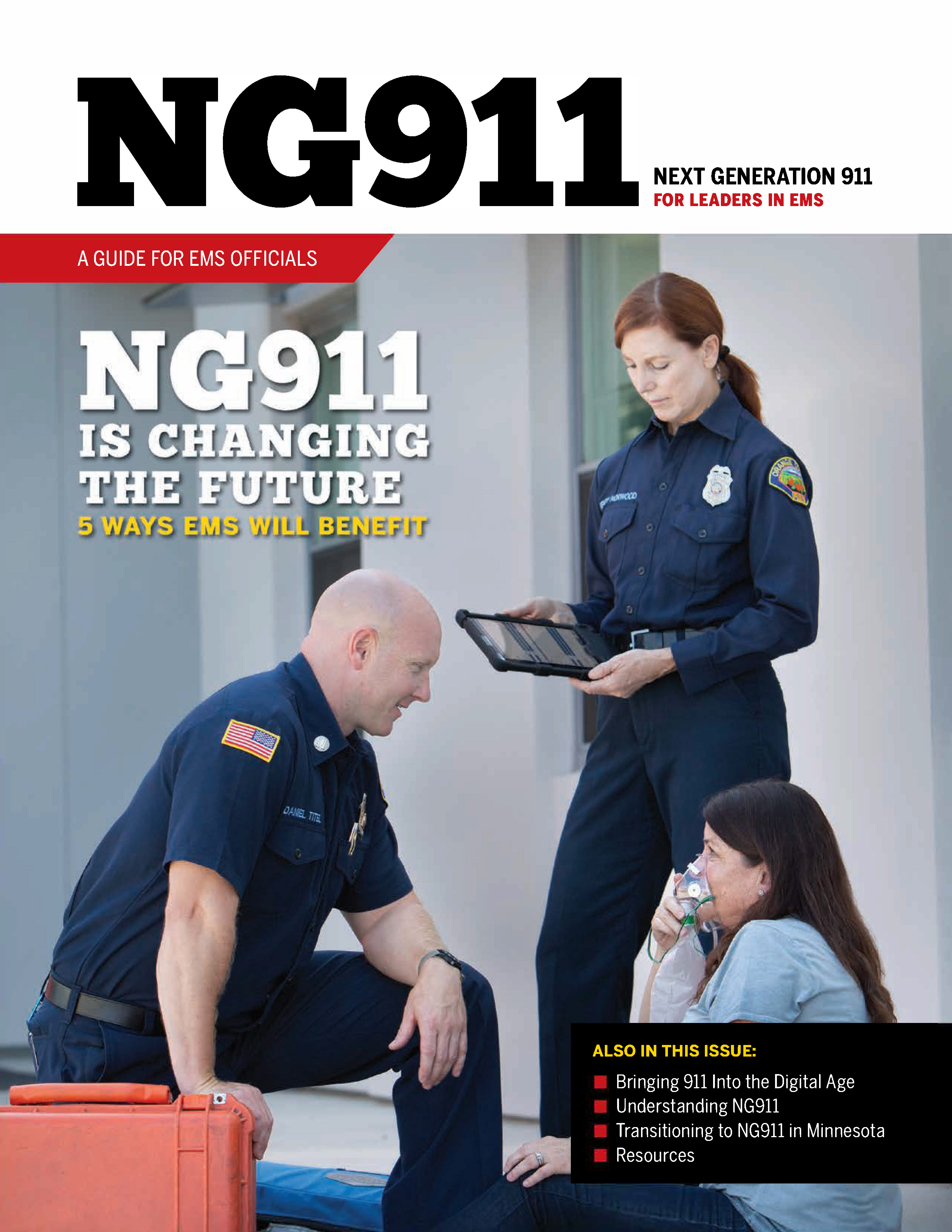A Closer Look at How Next Generation 911 will Transform EMS
New NG911 Guide for Leaders in EMS explains how NG911 works and why EMS leaders must be a part of its implementation in their communities
Most 911 systems across the United States were originally built using analog technologies that have become outdated, unreliable and impractical. That’s why the National 911 Program, housed in NHTSA’s Office of EMS, is supporting efforts to upgrade public safety answering points (PSAPs) throughout the country to a digital or Internet Protocol (IP)-based 911 system – commonly referred to as Next Generation 911 (or NG911 for short).
The recently published NG911 Guide for Leaders in EMS offers a glimpse into how NG911 could be transformational for EMS systems, clinicians and their patients. The implementation of NG911 will vastly improve both the reliability and data and information sharing capability of 911, since it will enhance emergency number services to create a faster, more resilient system that allows voice, photos, videos and text messages to flow seamlessly from the public through 911 telecommunicators to EMS clinicians. NG911 will also improve a PSAP’s ability to help manage call overload and ensure proper jurisdictional responses using location tracking. The transition will rely upon not only new technologies, but also the coordination of a number of emergency communication, public safety, legislative and governing entities.
In addition to the guide for EMS leaders, there are also NG911 guides for other sectors of public safety on 911.gov. Make sure to check out these and other resources and start preparing for the future of emergency communications.
We also encourage you to read this insightful interview with Barry Luke, deputy executive director of the National Public Safety Communications Council, published on JEMS.com.



